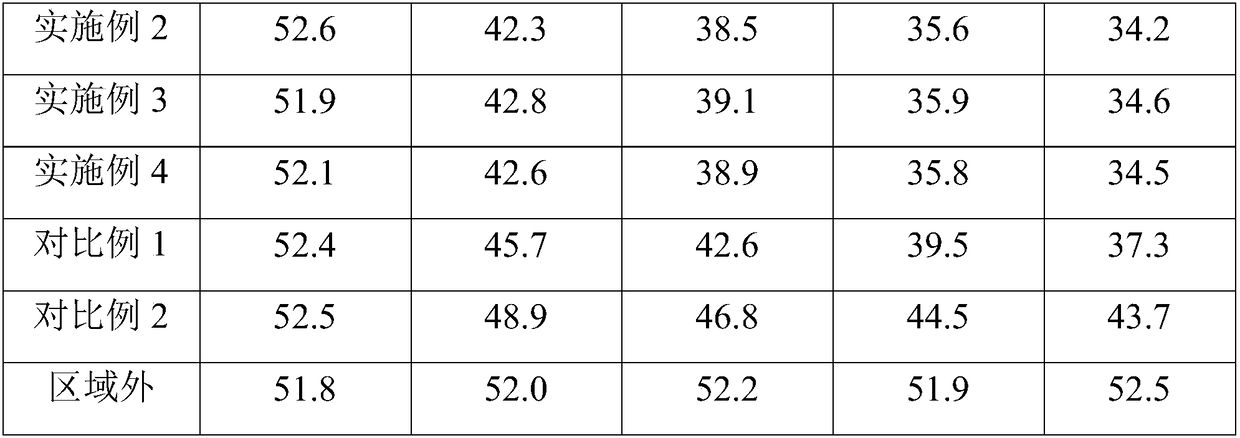In-situ restoration method for large water area pollution based on microbial strains
A microbial strain, in-situ remediation technology, applied in the field of environmental remediation, can solve problems such as high cost and insufficient effect, and achieve the effect of low cost, water quality improvement, and ecological environment maintenance.
- Summary
- Abstract
- Description
- Claims
- Application Information
AI Technical Summary
Problems solved by technology
Method used
Image
Examples
preparation example Construction
[0019] S1: Putting the first mixed strain in the polluted waters; wherein, the preparation method of the first mixed strain includes the steps of: separately expanding the culture of Synechocystis, lactis and actinomycetes until the cell concentration is 10 8 ~10 9 cfu / g, and then mixed evenly at the ratio of viable bacteria number (15-20): 1: (2-3) to obtain the first mixed strain;
[0020] Preferably, it also includes the steps of sequentially subjecting the uniformly mixed mixture to ultraviolet mutagenesis, chemical mutagenesis and ultraviolet mutagenesis: the irradiation intensity of the ultraviolet lamp used for the ultraviolet mutagenesis is 25-28W, and the ultraviolet lamp and the uniformly mixed mixture The vertical distance is 30-35cm, and the time of ultraviolet irradiation is 20-28s; the chemical mutagen used in the chemical mutagenesis is diethyl sulfate aqueous solution, and the mass percentage of diethyl sulfate aqueous solution is 1.0%-1.2%; The volume ratio o...
Embodiment 1
[0026] This embodiment provides a method for in-situ remediation of large water pollution based on microbial strains, including steps:
[0027] S1: Putting the first mixed strain in the polluted waters; the preparation method of the first mixed strain includes the steps of: separately expanding the cultivation of Synechocystis sp. 8 cfu / g, and then mixed evenly at a ratio of viable bacteria number of 18:1:2.5 to obtain the first mixed strain;
[0028] S2: 24 hours after putting in the first mixed strain, put the second mixed strain in the polluted waters; the preparation method of the second mixed strain includes the steps of: making Synechocystis, denitrifying bacteria, Streptomyces jingyang and Thiobacillus oxidans Expand the culture to a cell concentration of 5×10 8 cfu / g, and then mixed evenly at the ratio of viable bacteria number of 12:1:11:2.5 to obtain the second mixed strain;
[0029] S3: 12 hours after putting in the second mixed strain, put the third mixed strain ...
Embodiment 2
[0032] This embodiment provides a method for in-situ remediation of large water pollution based on microbial strains, including steps:
[0033] S1: Putting the first mixed strains in the polluted waters; wherein, the preparation method of the first mixed strains includes the steps of: separately expanding the cultivation of Synechocystis sp. 8cfu / g, and then mix uniformly at a ratio of viable bacteria number of 18:1:2.5, and then carry out ultraviolet mutagenesis, chemical mutagenesis and ultraviolet mutagenesis on the uniformly mixed mixture to obtain the first mixed strain; wherein, ultraviolet mutagenesis The irradiation intensity of the ultraviolet lamp adopted for mutagenesis is 26W, the vertical distance between the ultraviolet lamp and the mixture after uniform mixing is 33cm, and the time of ultraviolet irradiation is 24s; The mass percentage of ethyl ester aqueous solution is 1.1%; the volume ratio of the uniformly mixed mixture and the chemical mutagen is 100:1.3; th...
PUM
 Login to View More
Login to View More Abstract
Description
Claims
Application Information
 Login to View More
Login to View More - R&D
- Intellectual Property
- Life Sciences
- Materials
- Tech Scout
- Unparalleled Data Quality
- Higher Quality Content
- 60% Fewer Hallucinations
Browse by: Latest US Patents, China's latest patents, Technical Efficacy Thesaurus, Application Domain, Technology Topic, Popular Technical Reports.
© 2025 PatSnap. All rights reserved.Legal|Privacy policy|Modern Slavery Act Transparency Statement|Sitemap|About US| Contact US: help@patsnap.com


